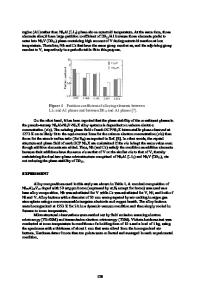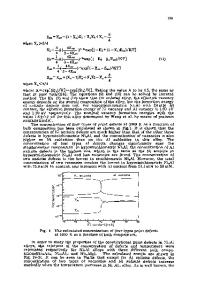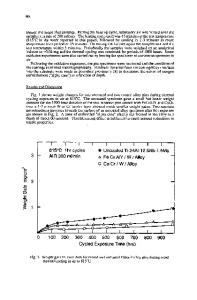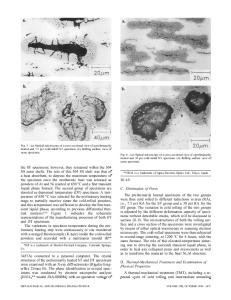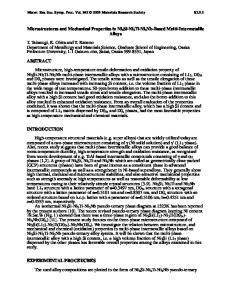Reactive Sintering of Ni 3 Al Intermetallic Alloys Under Compressive Stress
- PDF / 2,295,145 Bytes
- 6 Pages / 420.48 x 639 pts Page_size
- 48 Downloads / 355 Views
REACTIVE SINTERING OF Ni5 A1 INTERMETALLIC ALLOYS UNDER COMPRESSIVE STRESS" K. H. WU' AND C. T. LIU"" "Florida International University, Dept. of Mechanical Engineering, University Park Campus, Miami, FL 33199 "Metals and Ceramic Division, Oak Ridge National Laboratory, Oak Ridge, TN 37831-6115
ABSTRACT Synthesis of the Ni-25% at. Al intermetallic compound by the thermal explosion mode subject to the application of compressive stress was systematically investigated. The stress was applied prior to the reaction. It was proved that the compressive stress had a profound effect on the reaction, as well as the densification. At a relative low stress, a full reaction could be completed and the major phase of the final product is Ni3AI. At higher stresses, a partial reaction was resulted and the final product was primary the intermediate phases, e.g. Ni and NiAI, etc. Three distinct reaction products were obtair.ed in this study. When the stress was below approximately 5 MPa, a fully reacted product was obtained. Between 5 and 15 MPa, a fully and partially reacted zone coexisted. Above 15 MPa, only a partial reaction prevailed. In this experiment, a final product of 99.9% relative density was obtained at the high stress level.
INTRODUCTION Exothermic reaction is an innovative way to produce low cost, near net-shaped products at a temperature much lower than the melting point of the compound [1-5]. German et al. [2,6-9] conducted substantial studies on the reaction sintering of Ni3AI under stress-free conditions. The maximum relative density reported in their study was 97%. A great deal of effort has been exerted to improve the density of the final product through different means, such as explosive compacting [10]. However, the ultimate density reported rarely exceeds that of the German et al. study, unless other processes are also involved, e.g., Hiping [9,11]. It is the goal of many researchers to accomplish a fully dense product from this novel technique. Reaction sintering of intermetallic compounds with the presence of compressive stress has been investigated by a few researchers [12-14]. Rawers et al. [12] applied a pressure of 1.4 MPa to TiAI specimens. The density of the product achieved using this method did not exceed 95%. Nishimura and Liu [13,14] recently applied a 50 MPa compressive stress during the processing of Ni 3Al using alumina blocks smaller than the diameter of ;he specimen, and they were able to achieve 99.3% relative density. It appears that the compressive stress has a significant effect on the reaction process. The purpose of this study is to conduct a .zystematic investigation of the effect of compressive stress on the reaction sintering of Ni 3AI and to obtain very dense products.
THE EXPERIMENTAL PROCEDURE The average diameter of the spherically shaped, atomized aluminum powder was approximately 12 pm, and the irregularly shaped, general-purpose nickel powder was 8 pm. The 25.4 mm diameter, 20-g green compacts were prepared from stoichiometric (75 at. % Ni and 25 at. % Al) elemental powders
Data Loading...


